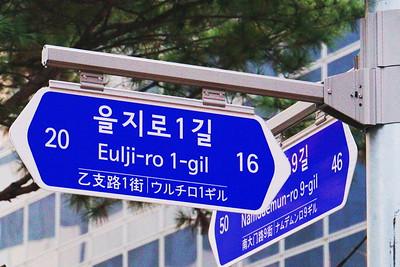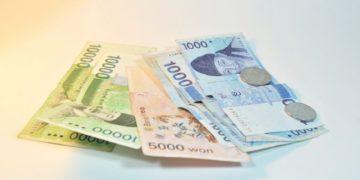Last Updated on 12 months by admin
Understanding Korean addresses is essential for travelers navigating South Korea. Familiarity with this structure enhances your ability to locate destinations, use navigation apps effectively, and comprehend local signage, ensuring a smoother travel experience.
Whether you’re sending a care package to someone in South Korea or need to receive mail while visiting the country, understanding Korean addresses can be incredibly helpful. While it may seem tricky at first, learning the format and some essential vocabulary will make the process much simpler!
How to Write a Korean Address
Korean addresses are written a bit differently than in many Western countries. The format starts with the largest geographical area, such as the city or province, and moves down to the specific building or house number.
South Korean Address Format
Here is the general order when writing a Korean address:
- Recipient’s Name (Family name first, if using Korean names)
- City/Province
- District/Municipality
- Street Name and Building Number
- Apartment or Floor Number (if applicable)
- Postal Code
Here’s an example of a Korean address written in Korean language, its romanized version, and an English version.
| Korean Language | Korean Romanization | English |
|---|---|---|
| 킨서준 서울특별시 강남구 선릐로190길 114 06010 (대한민국) | Kim Seojun Seoulteukbyeolsi Gangnam-gu Seolleung-ro 190-gil 114 06010 (Daehanminguk) | Seojun Kim 114, Seolleung-ro 190-gil, Gangnam-gu, Seoul 06010 South Korea |
Helpful Notes on Korean Addresses
New Korean Address System
South Korea adopted a new address system a few years ago. Instead of using local area names within districts, the system now uses street names and building numbers. While the older system can still be seen, the new format has made it easier to navigate, especially for foreigners.
Road Designations
Korean roads are designated with specific terms:
- 대로 (Daero): Major roads, often wide and with heavy traffic.
- 로 (Ro): Mid-sized roads with 2 to 7 lanes.
- 길 (Gil): Smaller roads or lanes with one lane branching from larger streets.
Addresses with Apartments and Buildings
For apartment complexes or buildings, you’ll often see:
- 동 (Dong): Indicates the building number.
- 호 (Ho): Refers to the unit or apartment number.
For example:
- 201동 304호 = Building 201, Unit 304
Multistory Buildings
When specifying floors in tall buildings, the address includes the floor number:
서울특별시 강남구 선릐로190길 114 6층 33호
#33, 6th Floor, 114, Seolleung-ro 190-gil, Gangnam-gu, Seoul
Essential Vocabulary for Korean Addresses
Here are useful Korean words and phrases you’ll often encounter:
| Korean (한국어) | English |
|---|---|
| 주소 (juso) | Address |
| 봉투 (bongtu) | Envelope |
| 포지 (pyeonji) | Letter |
| 시 (si) | City |
| 구 (gu) | District |
| 로 (ro) | Road (2-7 lanes) |
| 길 (gil) | Road (1 lane) |
| 우체국 (ucheguk) | Post office |
| 오피스테르 (opiseutel) | Multistory building |
| 우편번호 (upyeonbeonho) | Zip code |
Wrap-Up
Now that you know how to write and understand Korean addresses, you’re ready to start sending and receiving mail in South Korea with confidence. Whether you’re navigating cities, living abroad, or simply staying connected with loved ones, this guide provides all the tools you need. Start practicing today and make the most of your time in Korea!
Related Posts
5,664 total views, 11 views today


















